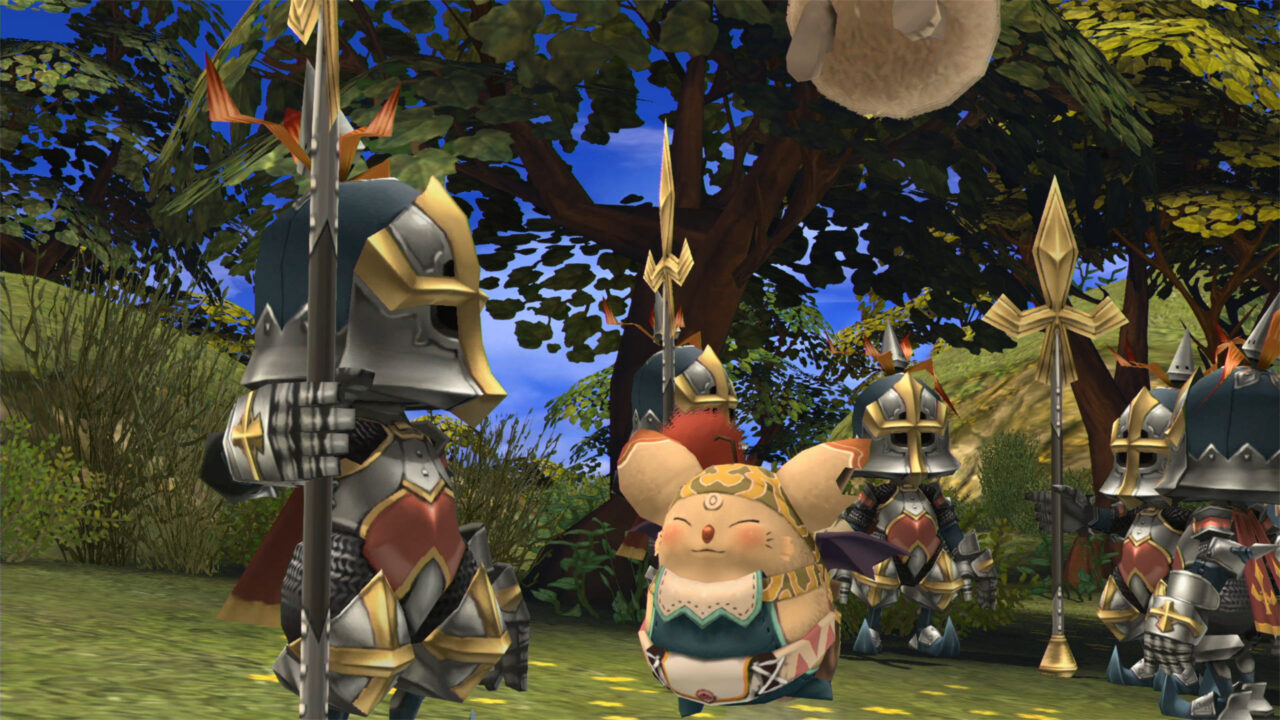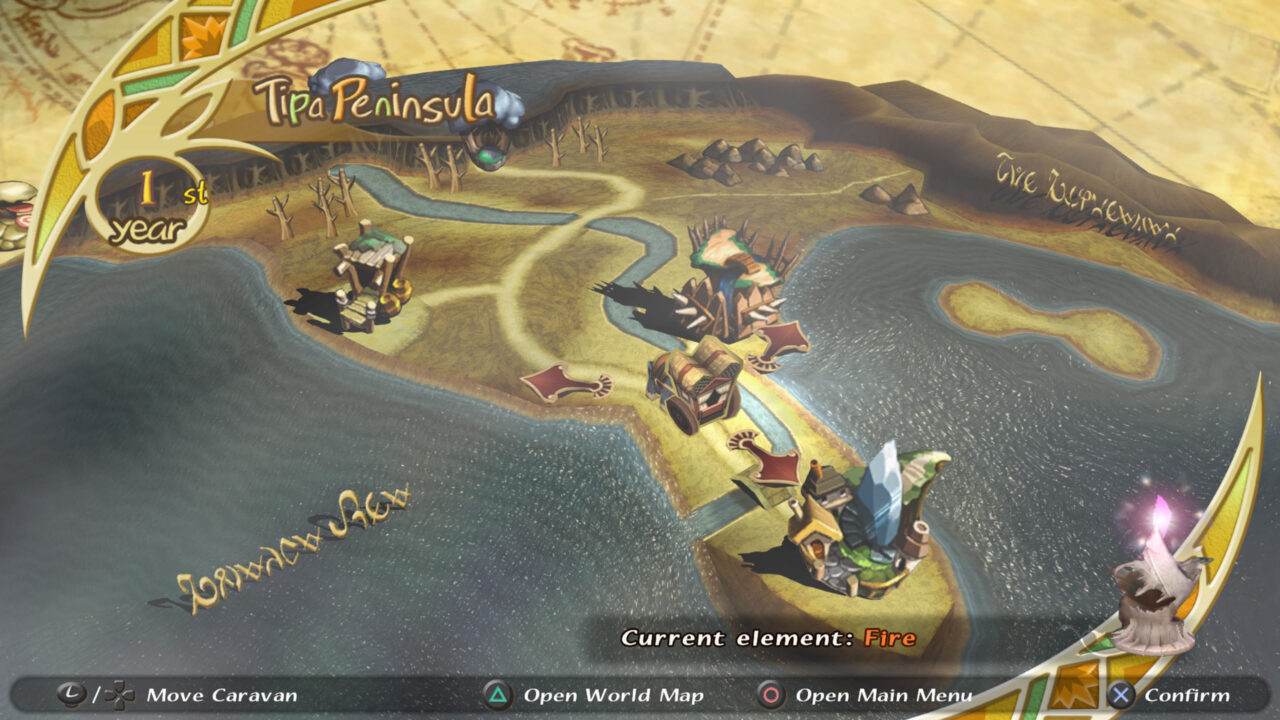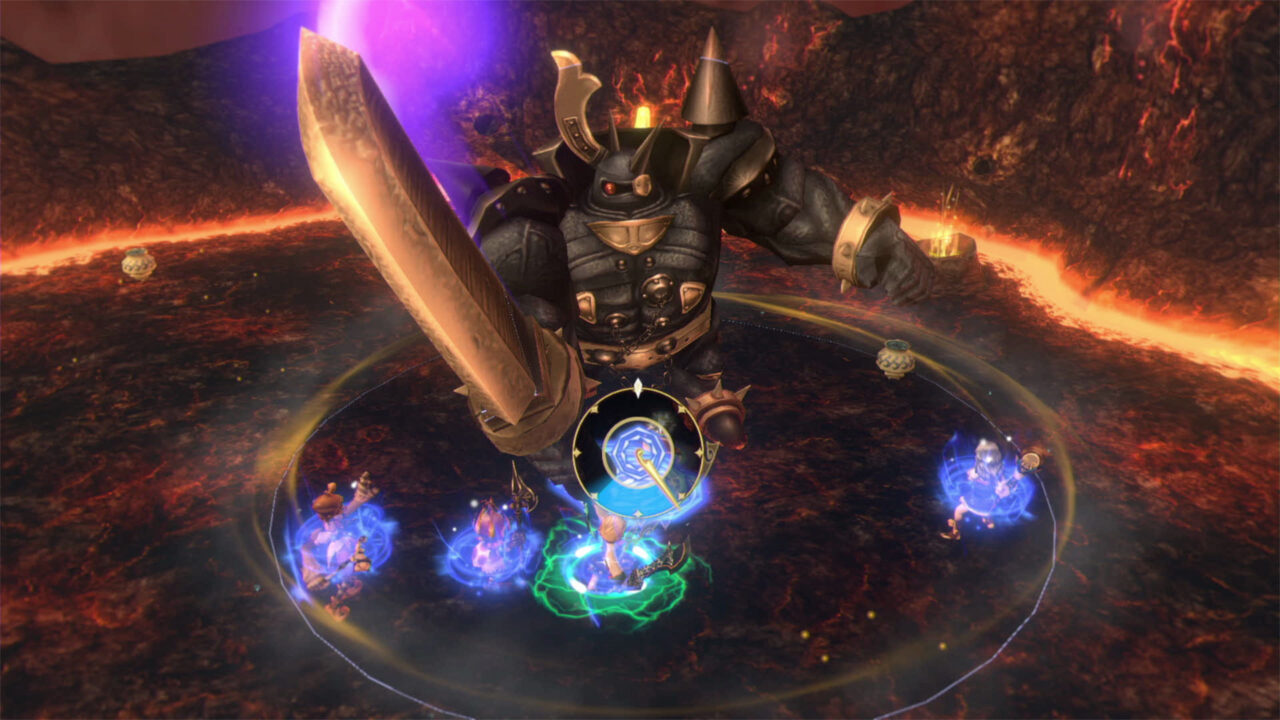See the video version of this review at the end of this page!
The Final Fantasy series has seen its share of spin-offs, for better or worse. Not everyone enjoyed the journey Mystic Quest took you on, whereas Tactics has become a hit with fans clamouring for more. Final Fantasy Crystal Chronicles (FFCC) went to a vastly different place, bringing in a clunky multiplayer element that allowed players to explore its strange, wonderful world together. 17 years later, Square Enix has remastered this GameCube classic for modern consoles, but this polished port may not be for everyone.
Little has changed in terms of how the experience handles, yet there are still a few new draws in this remaster. The obvious (and welcome) fix is that players don’t need a collection of friends with Game Boy Advances (GBA) huddled together for a four-player adventure. Instead, Final Fantasy Crystal Chronicles Remastered Edition (FFCCRE) allows cross-platform play on Switch, PS4, and smart devices with applicable online subscriptions. This makes it much easier to access, but the sense of building an adventure and world together is lost. The GameCube version had a couch co-op experience, as players each made a caravan member whose family joined your humble home village and created a common space throughout the experience. With the current lack of couch co-op, players need to populate their entire caravan roster on their own, and only the host player progresses their character’s storyline. Other PCs don’t influence the home village in any way, although they do retain the loot earned from dungeons they explore. Once you’ve adventured with someone, you can “follow” them. If they follow you back, then you’ll be on each other’s Friends List, making it easier to play together again in the future.
But never fear, despite the modern streamlining, a bit of FFCC‘s former obtuseness is retained! After defeating the dungeon boss and collecting the spoils, players choose either to play the same dungeon or disband the game. Why can’t we just choose a new location? Why must we exit, create a new lobby (which requires a non-specific amount of time to do) and find each other again to journey somewhere else? All that being said, if everyone gets together with mobile devices to play, there is some semblance of that cooperative journey, since multiplayer is where the real magic happens. I’ve watched my daughter (10) dive in with a friend and navigate through joining a game without my help and overcome the River Belle Path with minimal hiccups. Since then, I’ve started a new caravan experience with my daughter and, honestly, the game flows that much better when you bring a friend along!

While on your journey, players may spy the various moogle houses dotting the lands. Within, our fluffy, pop-pom headed friends give out stamp cards and stamps! Collecting sets of these stamps (or purchasing the necessary DLC) unlocks the new Mimic System, allowing players to transform their character into named NPCs or heroes from Crystal Chronicles and its spinoffs. In addition to the new base skins for every tribe, these fancy mimic skins offer a new way to customize your character, giving a new look and voice as well. This is a purely cosmetic addition, though, adding nothing mechanically.
The last major gameplay additions are the post-game dungeons, unlocked upon completing the main story. You can adventure around to the prior locations and see a change of scenery and bestiary. These dungeons essentially offer players a whole new playthrough with a greater challenge that isn’t to be taken lightly, and improved loot added to the remaster. It’s quite refreshing to see a new take on these settings, but they add little but padding. Exceedingly difficult padding. Only the most dedicated completionists need apply as you grind your way through palette-swapped foe after palette-swapped foe.
For better or worse, the core mechanics — dungeon crawl to collect loot and myrrh — are all the same. Square Enix missed an opportunity to streamline the battle mechanics, instead sticking to the clunky rotating action menu and single-button mash of yore. They could have assigned actions to the many buttons current controllers have which the GBA lacked and made the whole affair that much more engaging. It’s unfortunate, since you spend most of your time gallivanting about the many dungeons with either your intrepid moogle companion Mog or friends in multiplayer. At least the simplicity of the system ensures that players of all ages can get the most from the experience. The learning curve is minimal, as evidenced by my daughter’s ease with the game. And while she’s a bit more veteran, her friend I mentioned is not and they seemed to pick up it well enough. Before too long they were applying effective teamwork alongside plenty of goofing around in their adventure together.
As before, you get thrown right into the game with very little direction. The introductory tutorials lead you through character creation and setting out on your adventure, but the storytelling is sparse and offers little motivation aside from, “Well, you bought this game, right? So play it!” Okay, sure, that’s reductive, but FFCC originally had a unique method of conveying its tale through journal entries, dubbed the “Crystal Chronicle,” that gave embellishment to the random story encounters and dungeon runs. Reading them is entirely optional, so players could be left in the dark early on, wondering what the purpose of this whole adventure is. What is myrrh? Why am I carrying a chalice? What’s this boundary I need to stay in? The game has such a wonderfully rich and unique setting but conveys many of its concepts poorly, largely due to the heavy focus on the dungeon crawling experience.

In the remastered version, little has been done to fix this, and the longer load times can add up and hurt the pacing when you’re forced into some short scene that offers little in terms of development. Overall, the game’s pacing was kind of a mess and remains that way 17 years later. For all its snappy (if monotonous) combat and wondrous world-building, the game is bogged down by cumbersome inconveniences, barriers, scenework, and boss battles that just waste your time the further you adventure in. The truly dedicated will see their way to the end and be rewarded with an onslaught of confused storytelling and world concepts that rival Kingdom Hearts errata, crammed into the game’s final hours.
To its credit, there is a lovely message of how precious memories are, how life is to be experienced and loved, and that we need to let go sometimes to make room for personal growth. But why wait until the final boss encounter to hit us with all that? The game has 999 memories that can be collected, so perhaps those fill in more blanks, but if that’s the case, it remains a poor vehicle for telling the story and expecting players to “get it” by the final moments of the game. Despite this, you’ll consistently be impressed by the beauty around you.
FFCC originally pushed the GameCube to produce a truly fantastical experience in a vibrantly coloured and strongly characterized world that felt inspired by Final Fantasy IX. The graphical fidelity has been greatly improved to the benefit of this game, and FFCCRE looks stunning. Crisp textures elevate every environment, 3D models seem more polished, and the atmosphere is as stirring as ever. This game did such a great job of capturing a mood with the ambiance and colour palette of each dungeon, and modern consoles can now do its visuals justice. I just wish we could really see it, though! The fixed camera made sense on the GameCube, but now it’s simply frustrating when you can’t see past some obstruction mid-combat or take in the lovely scenery as you wander through town. That small gripe aside, as the opening cutscene plays, you’ll clearly see the love held for this wondrously designed world and all its denizens.

In addition to the visuals, FFCCRE has included some brilliant new pieces of music alongside an already unique and largely fantastic soundtrack. Kumi Tanioka created a fascinating, rustic soundscape with instruments like the hurdy gurdy leading many of the pieces and has returned to create arrangements for the high-level dungeons. Her inclusion ensures that each piece fits the distinct identity established by the original works, with some subtle changes to fit the new scenic changes in each location. Square Enix has also introduced full voice acting to the existing cutscenes, featuring many familiar performers who add a large amount of character to the story. Alongside Donna Burke’s mesmerizing narration and singing which holds up years later, the whole audible journey of the storytelling feels more cohesive. Altogether, the sound design is the perfectly balanced cherry atop the improved visuals.
For myself, FFCCRE was one of those experiences I couldn’t wait to jump into. I didn’t get into the original until well into the Wii’s lifecycle and missed out on the storied, clunky multiplayer experience. It’s too bad the journey can feel so aimless and disjointed at times with the mixed storytelling and the cumbersome mechanics that stick each component of gameplay together. It can be occasionally exhausting to navigate through the menus, swapping in different spells and items constantly as you beat on your foe for a good 30 minutes. I really wish Square Enix would give it the fair shake it deserves with modern conveniences, instead of dredging up dated gameplay mechanics that overshadow a wonderful, mystical little world. Still, getting to play a family-friendly tale with my daughter does make up for a lot of this, and if you can get some friends together, it could be the same for you.


